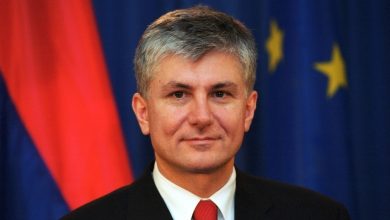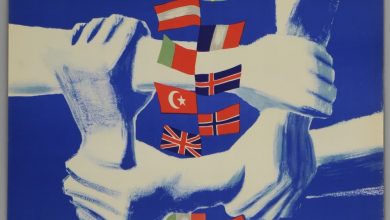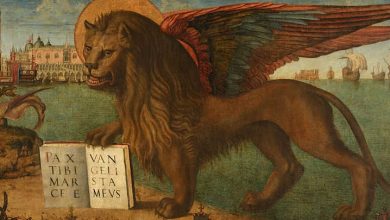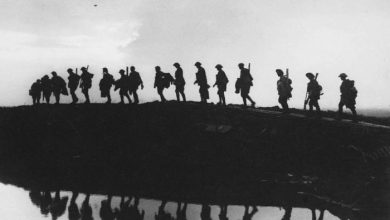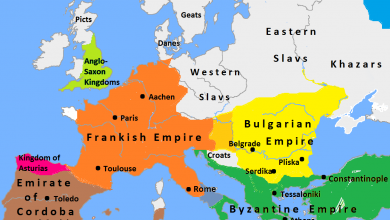The Bulldozer Revolution: When the Serbians Ousted Milošević
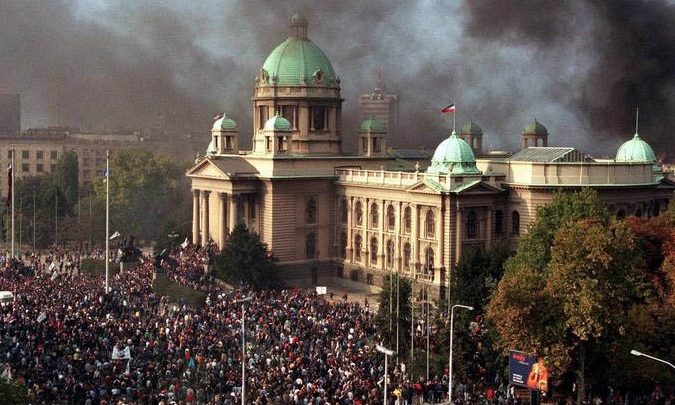
Every 5th October, Serbia celebrates the anniversary of the Bulldozer Revolution, which in the year 2000 culminated in the overthrow of Slobodan Milošević’s government. Started on the 24th September, following presidential elections which saw significant irregularities, the protests culminated on the 5th October with an engineering vehicle operator charging the building of the Radio Television of Serbia, considered to be a symbol and bastion of Milošević regime’s propaganda. This memorable event, which was the result of decades of suffering and political unrest, gave the name to this non-violent overthrow, and led to the official resignation of the President just two days later.
Who was Milošević?
Slobodan Milošević initially rose to power in the late Eighties as a figurehead personality in the Socialist Republic of Serbia, one of the constituent republics within the Socialist Federal Republic of Yugoslavia. Being an extremely charismatic leader, he was the one who subdued the main Yugoslavian power organs for the Serbs and “by the Serbs”. He was also one of the main nationalist figures with a front role in the conflicts which tore up the Socialist Federal Republic of Yugoslavia from 1991 to 1995. These wars lead to an incredible amount of crimes and atrocities committed mainly by Serbs and Croats, when both Croatia and Serbia (at that time under the name Yugoslavia) attempted to assert their dominance on the region, especially in Bosnia.
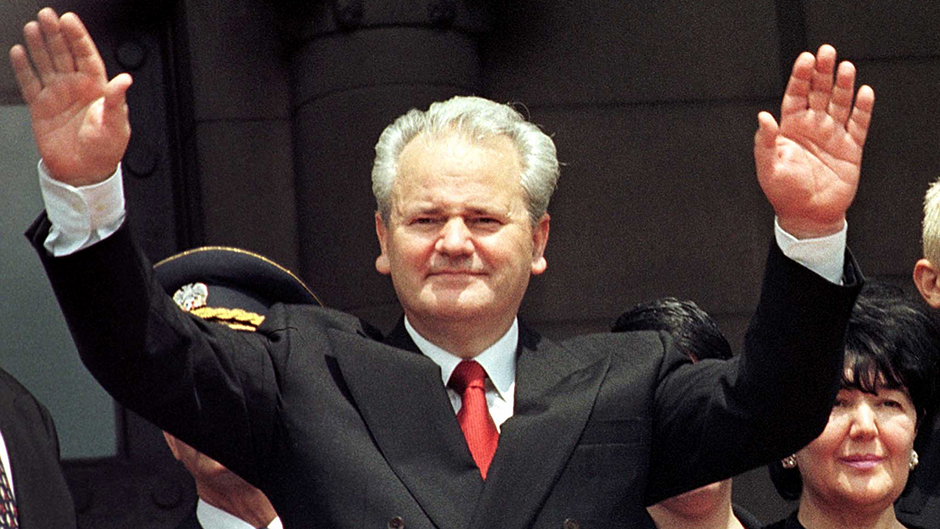
After the Dayton Peace Agreement, the now-fragmented region fell into a relative state of tranquility. Without external conflicts, the internal opposition to Milošević grew stronger each day passing. He became the President of the Federal Republic of Yugoslavia, composed of Serbia and Montenegro – a theoretically democratic state born from the ashes of the former 6-republics Socialist Federation. And yet, despite the democratic façade, the Socialist Party of Serbia and Milošević held the country with an iron fist, crushing opposition voices and main opponents even though the rallies against time grew.
The Aftermath of the Kosovo War
In February 1998 began the latest war in the Balkans, being the Kosovo War. Kosovo had for decades been an autonomous province under Serbian authority and was mainly populated by ethnic Albanian throughout, with the exception of its most northern province, populated by Serbs. Desiring an independent country, the Kosovo Liberation Army (KLA) attacked the Serbs from north Kosovo. The Federal Republic of Yugoslavia and Milošević answered by sending their troops attacking the KLA and the Albanian population, creating yet another conflict in which both Albanian and Serbs civilians suffered.
NATO, without directly consulting the UN, took the decision to act against the Federal Republic of Yugoslavia and began the Operation Allied Forces in March 1999. At that time, NATO bombers – mainly American and British ones – bombed Yugoslavian (mainly Serbian) troops and infrastructures. While the operation explicitly aimed towards military targets, it was inevitable that some civilians would get caught in the cross-fire. During bombings on Belgrade and Novi Sad, several bombs fell on living areas and schools, killing approximately 400 Serbian civilians in total. Yet, the bombings were efficient in the long-term and forced Milošević and his forces to withdraw from Kosovo, which was then placed under International Administration.
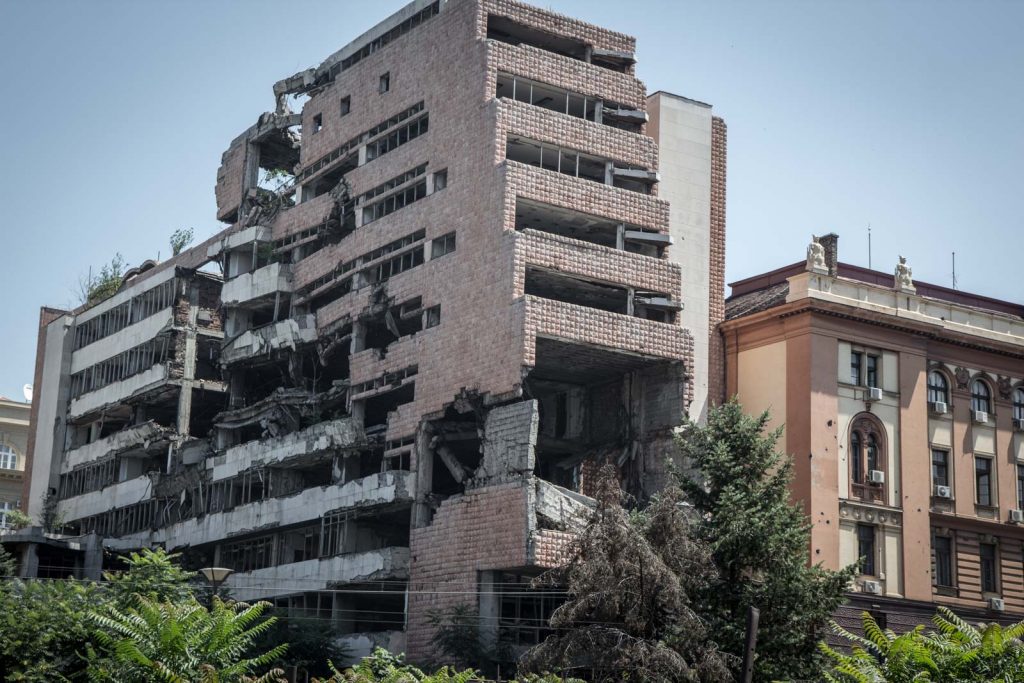
With the Federal Republic of Yugoslavia under harsh sanctions as a result of the de facto lost conflict, the Kosovo War was instrumental in turning the public opinion even more against Milošević and his rule. The population had had enough of him, and opposition rallies against his autocratic regime grew stronger once again. In January 2000, the opposition parties formed a coalition against him, led by the founder of the Democratic Party, Zoran Đinđić. The so-called Democratic Opposition of Serbia (DOS) had as its explicit goal that of ousting the Socialist Party and its tyrannical leader from the country’s political arena.
The Bulldozer Revolution
Trying to preserve his democratic legitimacy, Milošević called for early presidential elections in September 2000. The DOS saw this opportunity as a chance to finally drive him out of power and selected Vojislav Koštunica, a highly respected politician who was also the leader of one of the parties composing the DOS, as its presidential candidate. On the 24th September 2000, the first turn of the election took place. The DOS claimed that Koštunica had won over 50% of the votes, thus defeating Milošević by absolute majority without needing to resort to a second round. However, the Electoral Committee, controlled by Milošević’s government, announced that he hadn’t in fact won the required amount of votes and called for a second turn to be held.
The DOS called for a general strike in the country against this perceived electoral fraud. In early October, the miners of Kolubara mine, an important coal mine providing half of Serbia in electricity, went on strike. Half of Serbia was in the dark. The army and police were sent there to try to contain the protests and restore peace. However, the majority of them were not being paid anymore and equally exhausted by the regime, and consequently didn’t do anything against the miners – in some cases even joined their rallies.
On the 3rd and 4th of October, thousands of Serbs traveled all the way to Belgrade from all over the country, answering the calls of the DOS and other protesting associations such as the student movement “Otpor!” (“Resistance!” in Serbian). More than 300.000 people took to the streets of Belgrade on the 5th of October, all shouting “Gotov je” (“He’s finished!”) and calling for the President to resign. It was the shout of an entire generation for democracy and liberty. Even though police forces were deployed in the city, they didn’t firmly oppose the thousand of people, even though some tear gas was shot at the crowd during some points of the day.
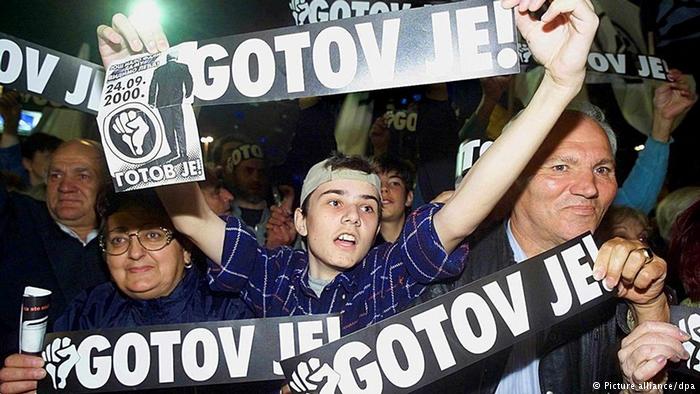
At some point during the protests, Ljubisav Đokić, an engineering vehicle operator, fired up his wheel loader (it was neither an excavator nor an actual bulldozer, the event name is inaccurate out of convenience) and used it to charge a Belgrade building. The building was the main office of the Radio Television of Serbia, main propaganda tool of Slobodan Milošević. The classical music which was being broadcast stopped. It would be remembered as the defining moment and symbol of the revolution against Milošević.
In the afternoon, a great part of the crowd gathered around the Federal Assembly, the legislative organ of the Federal Republic of Yugoslavia in the centre of Belgrade, which was still defended by some policemen. The crowd pushed forward and the guards finally joined them and they charged the Assembly together, taking over and waving on the balconies and roof flags of the Republic of Serbia, the Federal Republic of Yugoslavia, DOS, and other flags of the resistance movements.
Milošević remained locked in his house all day. At the end of it, Vojislav Koštunica and some other leaders of the DOS joined all the crowd and announced his political victory on the balcony of the Federal Assembly. Under the pressure of the people and due to his legitimacy having been completely broken, Milošević finally resigned the 7th of October 2000.
The Aftermath
After that, things went fast. The new government in place announced that general elections would be held in December 2000. Zoran Đinđić became the candidate of the DOS for the post of Prime Minister. Meanwhile, the European Union lifted the sanctions on the country, allowing new funds and humanitarian aid to come in the Federal Republic of Yugoslavia. The DOS won the absolute majority in the general elections and Zoran Đinđić was sworn as Serbian Prime Minister in January 2001.
At that time, it looked like things would be going fine for Serbia. Milošević was arrested and sent to the International Criminal Tribunal for the former Yugoslavia in April 2001 to answer for his crimes during the Balkan wars. Đinđić was a true believer in democracy, a very energetic man passionate about education and rule of law. He also was a staunch pro-European and thought that the European Union would help Serbia to achieve its transition to peace and democracy. As he once said: “As a man who had been kept under water for 50 years, wishing to grasp some air, Serbia cannot be stopped on its path to the oxygen, and that is Europe, being a family of democratic, modern and developed countries.”
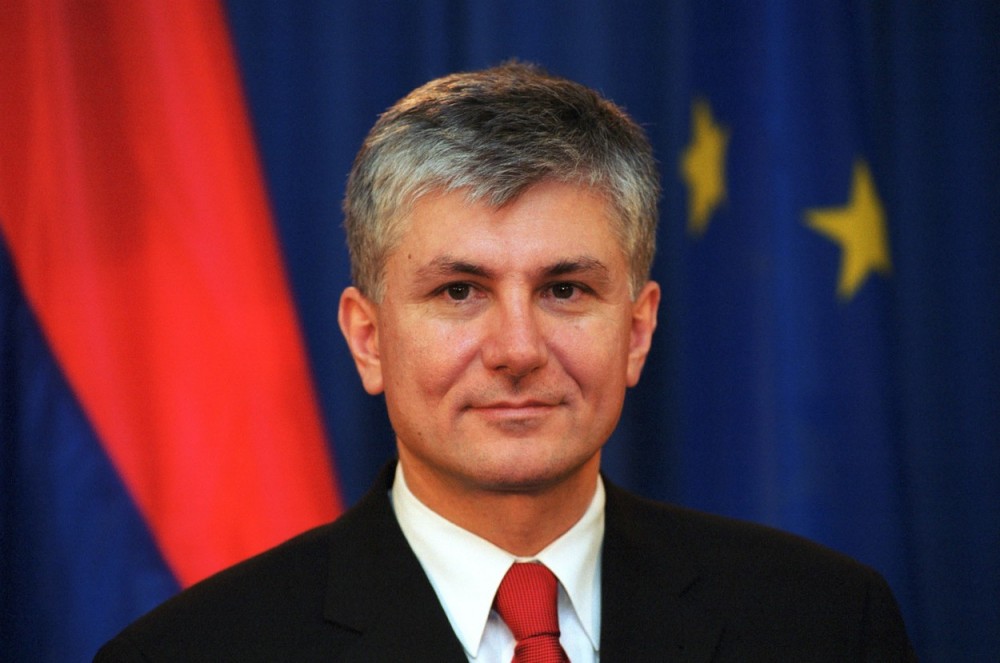
Yet, the reformist Prime Minister had enemies. The Conservatives didn’t like the reforms that the Demokratska Stranka and Zoran Đinđić were pushing forward, and by trying to tackle the issue of mafia groups in the country, he found himself on the hit-list of many criminals. He faced several attempts of assassination, but never backed down from his reforms. In early March 2003 he was quoted saying: “If they think that by eliminating me they’ll stop the progress, they’re being mistaken. I’m not the system and it will keep going even if I’m not here for seeing it.”
Only a few days later, on the 12th March, Zoran Đinđić was shot in the back by a sniper, former supporter of Slobodan Milošević. He was 51 and had two young kids. The death of Đinđić was a huge blow to the forming democracy. Corruption and nationalist rhetoric came back in full force in Serbia.
Is It Time For a Second Bulldozer Revolution?
Fast-forward 15 years from that event, and Serbia finds itself in a difficult position – being led by a President and a party which are using the same methods that Milošević once used. The lack of charismatic leaders in the opposition, as Đinđić, partly explain the global disinterest towards politics coming from the younger generation, which had instead led the 2000 overthrow.
There is still a will of revolt subconsciously present in Serbia, there are still some people willing to fight against the autocratic ways of the government and trying to bring the post Bulldozer Revolution ideas to life. There are still people who believe that Serbia could one day fully enjoy democracy and liberty. But there’s a lot of work to do before any of that turns from wishful thinking to reality. Let’s hope that the new generation will find a renewed interest in these matters, in order to ensure a peaceful and free future for the Republic of Serbia. Some say more bulldozers would be needed for that.

